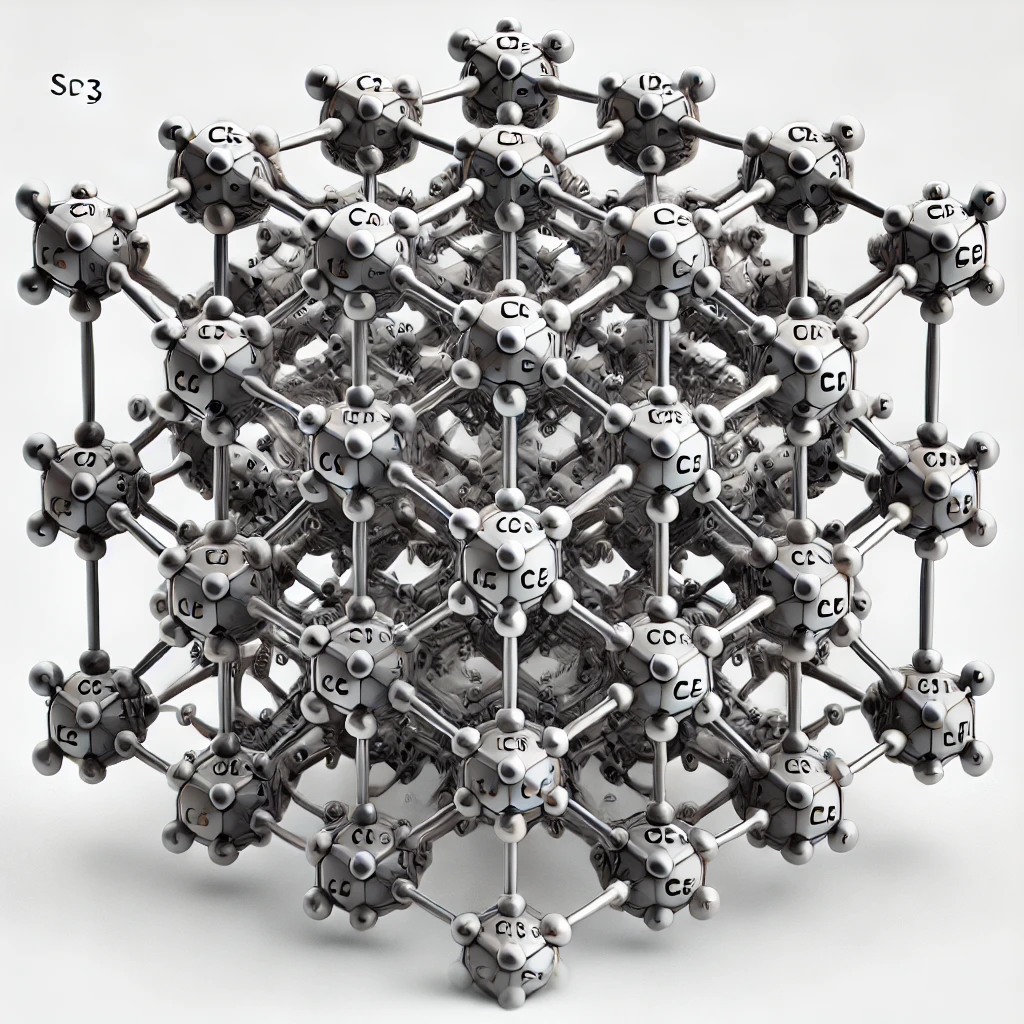
Abstract
Diamond films are thin film materials with excellent physicochemical properties, demonstrating significant advantages in hardness, thermal conductivity, and transparency. As a result, they find extensive applications in high-tech fields such as electronics, optics, and mechanics. This article explores the definition, chemical composition, molecular structure, and fabrication processes of diamond films, providing a better understanding of their characteristics and application prospects.
1. Definition and Characteristics of Diamond Films
Diamond films are thin layers of diamond grown on substrates using techniques such as chemical vapor deposition (CVD). Their primary composition is pure carbon. Compared to natural diamonds, diamond films possess similar hardness, wear resistance, and chemical stability, and their thickness, shape, and size can be precisely controlled. The carbon atoms in diamond films are tightly connected through sp³ hybridized orbitals, forming a robust covalent bond network that ensures the absence of impurities from other elements, thereby exhibiting exceptional hardness and stability. Furthermore, the molecular structure of diamond films is characterized by an infinitely extending three-dimensional crystalline arrangement, where carbon atoms are arranged in a face-centered cubic (FCC) lattice. Each carbon atom forms covalent bonds with four neighboring carbon atoms at tetrahedral angles of 109.5°. This unique structure allows diamond films to excel in hardness, thermal conductivity, and transparency, making them suitable for applications in cutting tools, optical windows, and high-temperature electronic devices.

2. Fabrication Processes of Diamond Films
The fabrication of diamond films primarily relies on two major methods: Chemical Vapor Deposition (CVD) and Physical Vapor Deposition (PVD). Various CVD and PVD processes exhibit distinct characteristics based on specific process requirements and application needs.
2.1 Chemical Vapor Deposition (CVD)
CVD is the principal method for producing diamond films, where carbon-containing gases (such as methane and hydrogen) are introduced for decomposition to generate carbon atom arrangements characteristic of diamond structures on the substrate surface. Below are several common CVD methods:
Hot Filament Chemical Vapor Deposition (HFCVD)
Reaction Gases: Hydrogen is mixed with hydrocarbons (such as methane or acetylene) and introduced into the reaction chamber.
Heating Method: A high-temperature filament (typically exceeding 2000°C) decomposes the reaction gases into atomic hydrogen and hydrocarbon species at its surface and nearby.
Advantages and Disadvantages: The HFCVD process features simple equipment and low cost, making it suitable for large-area deposition with relatively easy process control. However, due to the low ionization rate of the reaction gases, the growth rate of diamond films is slow (approximately 1-2 μm/h), and it is susceptible to metallic contamination, resulting in limited coating quality.
Microwave Plasma CVD (MPCVD)
Reaction Chamber: A quartz tube or stainless-steel resonant chamber is utilized.
Excitation Method: Microwaves are introduced into the reaction chamber via a waveguide, generating an alternating electric field that excites the gas to form a highly active plasma.
Advantages and Disadvantages: MPCVD offers high purity of plasma, avoiding contamination from electrodes and chamber walls; the energy density of the microwave plasma is high, providing an abundance of atomic hydrogen. Although the quality of diamond coatings produced by MPCVD is high, the fabrication efficiency is relatively low, and the equipment is expensive, making it unsuitable for large-area deposition.
Direct Current Arc Plasma Jet CVD
Discharge Method: Gas flowing between two electrodes is ionized by arc discharge in a direct current electric field, forming high-temperature plasma.
Advantages and Disadvantages: Arc CVD can provide extremely high concentrations of atomic hydrogen, enabling rapid deposition. This method boasts a good balance between deposition rate and quality but has high gas and electrical consumption costs, rendering it expensive. It is suitable for industrial applications.

2.2 Physical Vapor Deposition (PVD)
The essence of the PVD method lies in utilizing physical means to deposit high-energy carbon atoms onto the substrate surface to form diamond films. PVD is mainly used for the fabrication of high-quality films but generally exhibits slower growth rates.
Magnetron Sputtering
Principle: Under vacuum conditions, high-energy argon ions, controlled by a magnetic field, bombard a graphite target, causing carbon atoms from the target to deposit onto the substrate surface.
Advantages and Disadvantages: This method is suitable for producing films with high uniformity and density but has slow growth rates, making it less suitable for large-scale production.
Ion Beam Deposition
Principle: Carbon ion beams directly bombard the substrate surface, resulting in the deposition of carbon atoms and the formation of diamond films.
Advantages and Disadvantages: Although ion beam deposition produces high-quality films, the equipment is costly, and growth rates are slow, making it unsuitable for large-area coatings.
3. Conclusion
The fabrication processes of diamond films can be selected based on specific application requirements, choosing suitable CVD or PVD methods. Hot filament CVD is appropriate for applications requiring large-area coverage, such as low-cost protective coatings; microwave plasma CVD is suitable for electronic devices and optical windows that demand high film quality; direct current arc plasma jet CVD excels in balancing high-speed deposition and quality, making it suitable for industrial applications; whereas magnetron sputtering and ion beam deposition are ideal for high-precision, small-area, high-quality film fabrication. The selection of different fabrication methods depends on specific requirements for growth rate, uniformity, purity, and thickness. As the technology for diamond film fabrication continues to advance, these methodologies will find broad applications in new material development, nanotechnology, and high-end manufacturing.
Related product links
Silicon Carbide Wafer (SiC Wafer)
As semiconductor technology advances, Gallium Nitride (GaN) has become a core material in optoelectronics, rad...
With the rapid advancement of third-generation semiconductor technologies, Silicon Carbide (SiC) has emerged a...
As third-generation semiconductor materials such as silicon carbide (SiC) and gallium nitride (GaN) continue t...
